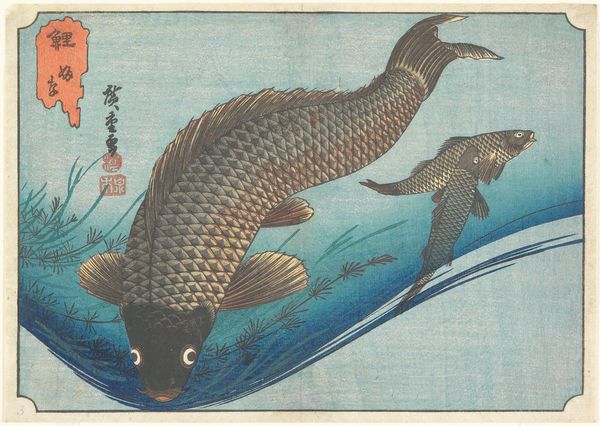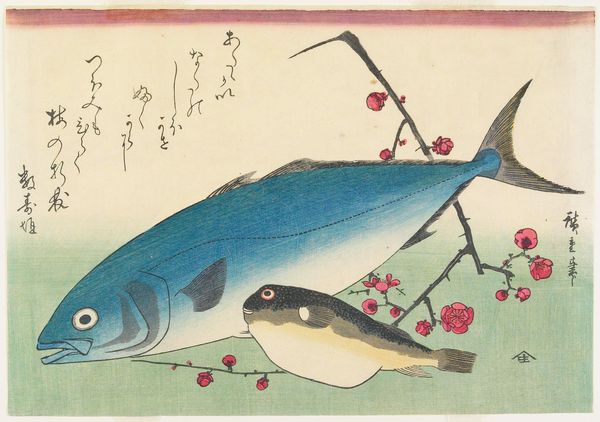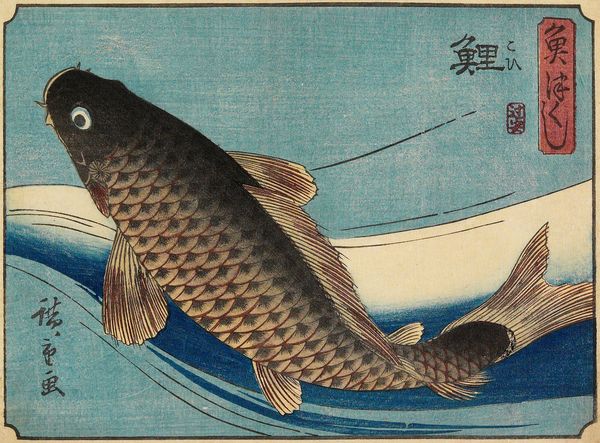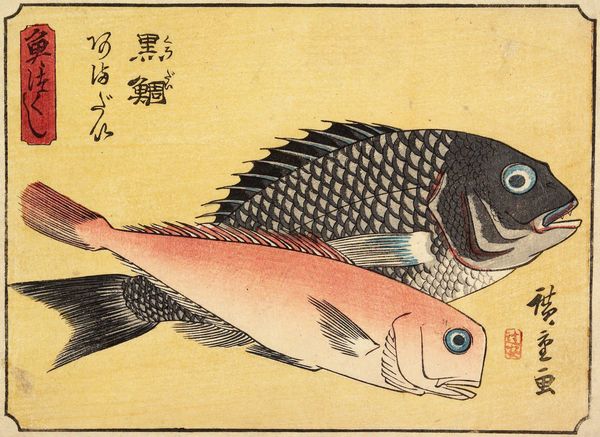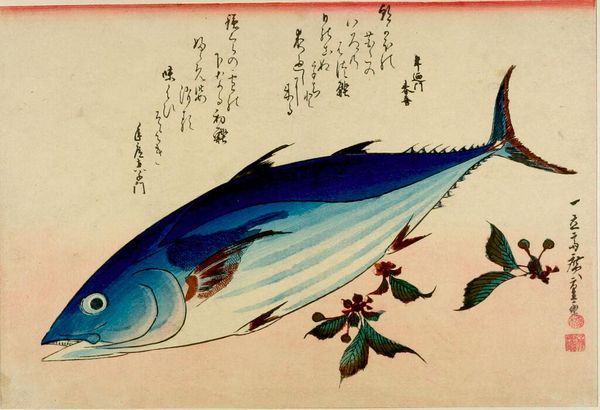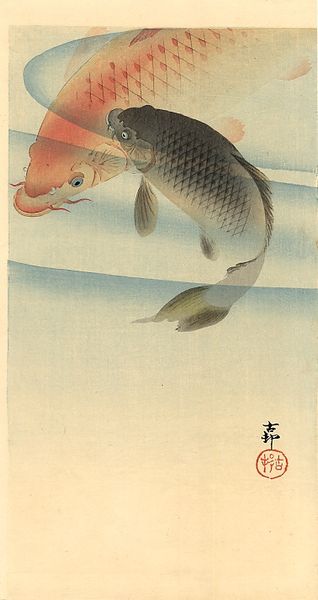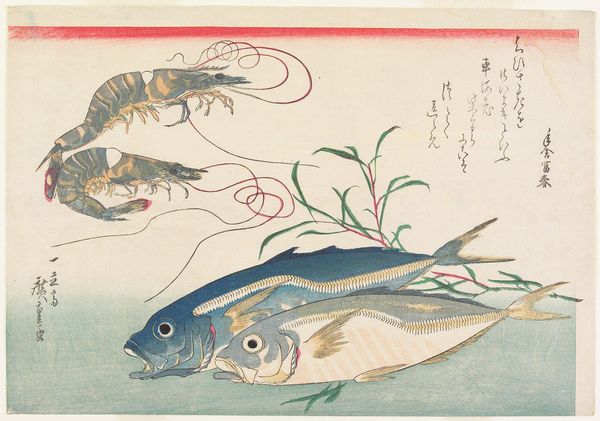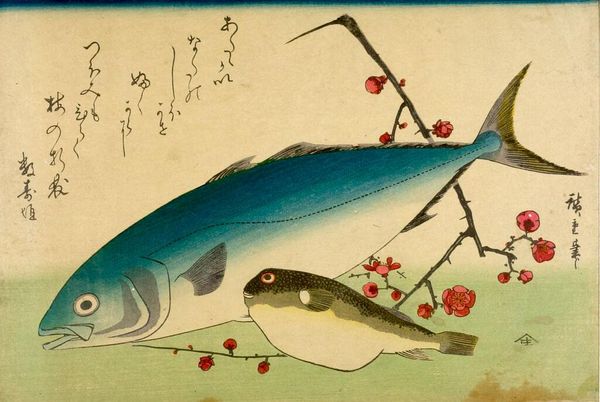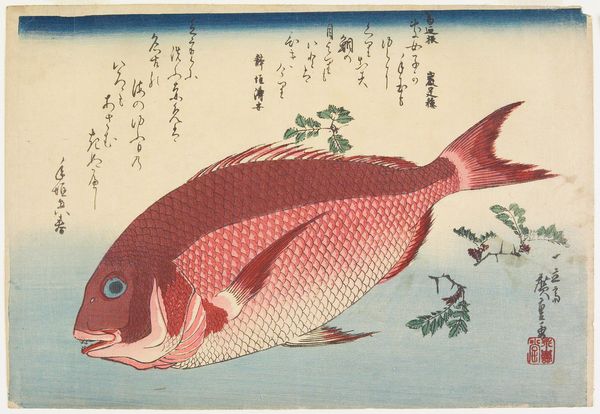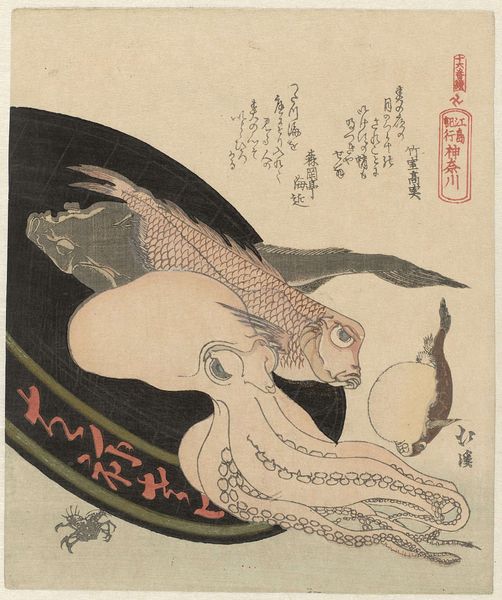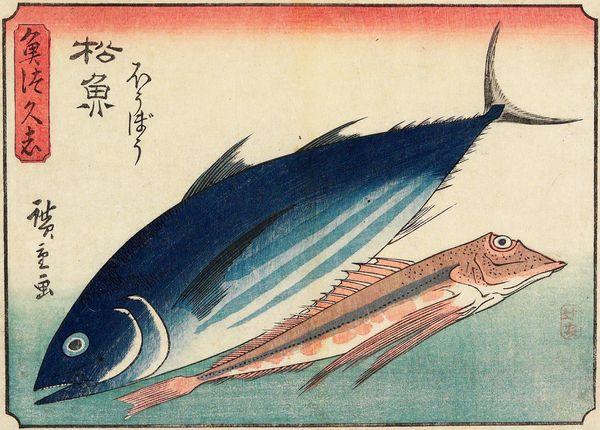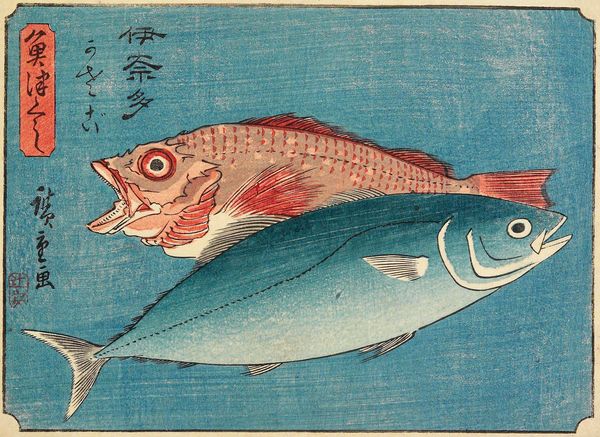
print, ink, color-on-paper
# print
#
ukiyo-e
#
japan
#
ink
#
color-on-paper
Dimensions: 6 9/16 × 9 3/8 in. (16.7 × 23.8 cm) (image, horizontal chūban)
Copyright: Public Domain
Utagawa Hiroshige created this woodblock print, "Bonito and Top Shells," during the Edo period in Japan. Hiroshige, like other artists of his time, navigated the complex social landscape of a society undergoing significant transformation. This print, part of the "Fish Series," reflects the growing interest in natural history and the increasing commercialization of art. Woodblock prints were not just artistic expressions; they were commodities, catering to a burgeoning middle class with disposable income. The floating world culture also influenced the consumption and appreciation of art. The choice of subject matter—a bonito, top shells, and irises—was likely influenced by seasonal associations and symbolic meanings. In this context, understanding the institutional frameworks—the publishing houses, the censorship boards, and the art schools—is crucial to interpreting its meaning. Studying Edo-period literature, trade records, and government regulations helps understand the context that shaped Hiroshige's artistic output. Art is never created in a vacuum.
Comments
No comments
Be the first to comment and join the conversation on the ultimate creative platform.


